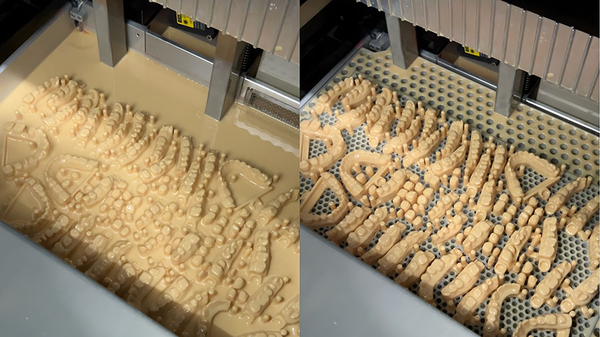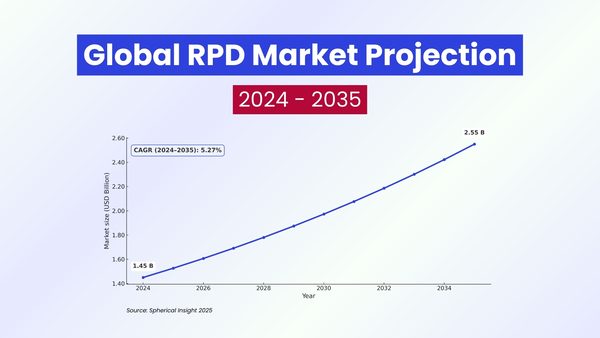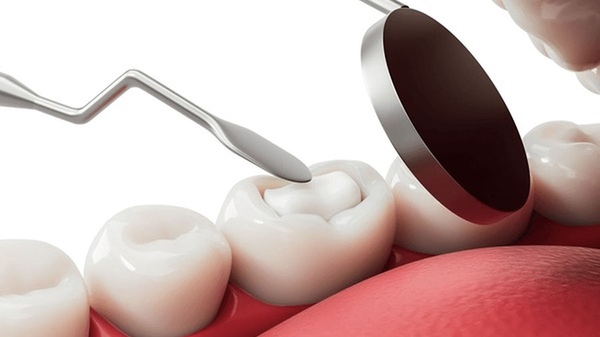Discover how the Full Arch Hybrid Bar is redefining modern dental lab operations. By combining titanium’s durability, zirconia’s esthetics, and digital CAD/CAM precision, hybrid systems are setting a new standard for efficiency, scalability, and global collaboration. Learn why this innovation represents not just the future of implant restorations, but the future of how dental labs do business.
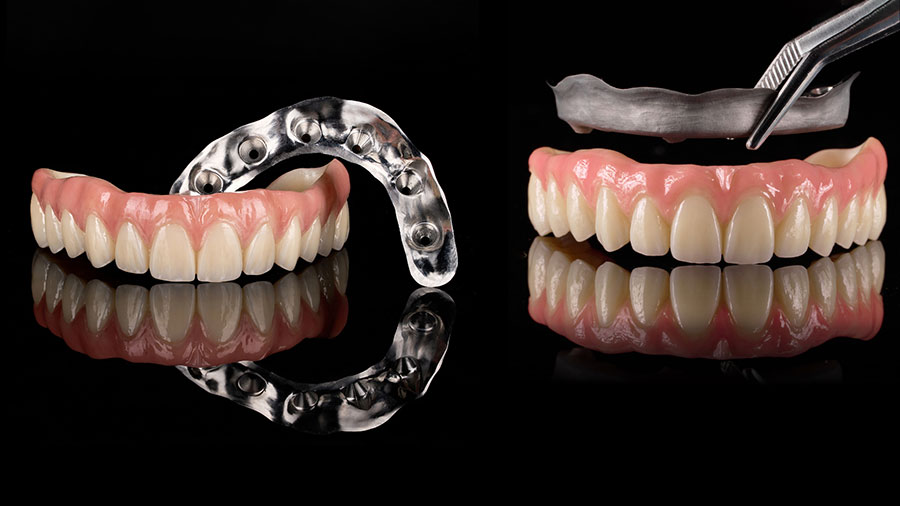
Table of contents [Show]
- Introduction
- Historical Perspective
- The Rise of Porcelain-Fused-to-Metal (PFM) Restorations
- Challenges and Limitations of Traditional Materials
- Introduction of CAD/CAM Technology
- Emergence of Hybrid Materials
- Hybrid vs. Monolithic Materials: A Practical Comparison for Labs
- The Strategic Value of Hybrid Systems for Modern Labs
- The Future of Full-Arch Restorations: A Hybrid Model of Collaboration
- Conclusion
Introduction
Over the past decade, the dental laboratory industry has entered a new phase of transformation; one driven not only by clinical innovation but also by digital precision and global collaboration. As demand for full-arch restorations continues to grow, laboratories across the United States face increasing pressure to deliver higher precision, faster turnaround, and more consistent aesthetics while managing costs and technician shortages.
At the center of this transformation stands the Full Arch Hybrid Bar, a titanium–zirconia solution that bridges mechanical strength with esthetic excellence. Once reserved for complex, high-end implant cases, this restoration has evolved into a strategic product for labs seeking scalability, efficiency, and predictable quality.
Unlike traditional acrylic or PFM frameworks, the hybrid bar integrates a titanium base for rigidity and longevity with a zirconia superstructure for natural esthetics and biocompatibility. This material synergy not only enhances the performance of restorations but also reshapes the production workflow itself, merging engineering precision with digital design accuracy.
For U.S. dental labs, this evolution raises critical questions:
How can we stay competitive when technician costs rise and skilled labor becomes scarce?
How can we integrate advanced materials like titanium and zirconia into our existing workflow without compromising quality or client trust?
And how can embracing hybrid systems help us scale smarter and deliver more consistent outcomes across high-volume implant cases?
This article explores those questions positioning the Full Arch Hybrid Bar not merely as a technical innovation, but as a business transformation. It represents a new operational philosophy for labs: one where precision, consistency, and collaboration redefine success in the modern implant market.
Historical Perspective
The Evolution of Implant Dentistry
The story of full-arch implant restorations begins long before the digital revolution. In the 1950s, Swedish researcher Per-Ingvar Brånemark discovered osseointegration, the process by which bone forms a direct bond with titanium. This discovery became the scientific foundation of modern implantology, proving that titanium could serve as a permanent, biocompatible anchor within the human body.
By the 1980s, studies by Adell and colleagues demonstrated that full-arch prostheses could be successfully supported by multiple implants, although treatment often required complex bone grafting and extended healing periods. Then in 1998, Dr. Paulo Malo introduced the revolutionary All-on-4™ concept enabling full-arch fixed prostheses to be supported by only four implants, tilted to maximize bone contact and avoid anatomical obstacles.
From that point forward, full-arch implant dentistry began evolving at a rapid pace. The early 2000s brought new materials like acrylic and PFM (Porcelain-Fused-to-Metal) frameworks, which improved function but required extensive manual craftsmanship. These restorations were durable but also labor-intensive, costly, and prone to aesthetic inconsistencies.
For dental laboratories, each technological shift, from osseointegration to All-on-4™ to CAD/CAM, marked not just a clinical milestone, but a business turning point. Each new wave of innovation forced labs to rethink how they produced, scaled, and delivered quality restorations efficiently.
Today, that same pattern continues. The Full Arch Hybrid Bar, combining titanium and zirconia through digital workflows, represents the latest evolution in this long journey, one that unites clinical reliability with production scalability, and craftsmanship with data-driven precision.
Early materials in full-arch restorations
Before the digital era and the rise of titanium–zirconia hybrid systems, full-arch restorations were largely defined by acrylic resins and metal alloys. These materials laid the groundwork for modern prosthetic fabrication, offering basic functionality and affordability but at the expense of precision, esthetics, and long-term consistency.
In the mid-20th century, most full-arch frameworks were made through manual casting and layering techniques, relying heavily on the craftsmanship of skilled technicians. The process included waxing, investing, casting, and veneering. Each step requires hours of labor and leaving room for minor variations that could affect fit and function.
While these methods shaped the artistry of dental technology, they also introduced operational challenges. Acrylic resins were prone to wear, fracture, and discoloration over time. Metal alloys, though strong, added complexity and cost due to their casting requirements and potential biocompatibility issues. For labs managing high case volumes, every remake or fit adjustment meant delays, additional costs, and inconsistent profitability.
Still, these early systems taught an essential lesson: a restoration’s success depends as much on its process as on its material. The experience gained from these manual workflows paved the way for the digital transformation that followed, setting the stage for stronger, more predictable, and scalable solutions like the titanium–zirconia hybrid bar that define today’s premium lab offerings.
The introduction of Porcelain-Fused-to-Metal (PFM) restorations marked a major technological leap in full-arch prosthetics. For decades, PFMs became the gold standard, offering a blend of mechanical strength and aesthetic appeal that earlier acrylic or metal-only systems could not match.
By combining a durable metal substructure with a veneered porcelain surface, PFMs allowed labs to produce restorations that balanced strength, function, and beauty. For clinicians, it was a reliable choice; for laboratories, it was a profitable one. The method standardized production and built trust between labs and dental practices.
However, PFMs also redefined what it meant to compete as a dental lab. Success was no longer just about craftsmanship. It required material management, quality control, and efficient workflows. As demand grew, labs had to invest in better casting systems, furnace technology, and technician training to keep up with market expectations.
Yet even at their peak, PFMs carried inherent trade-offs. While they offered durability, they required extensive technician skill for layering and firing. Achieving ideal esthetics, natural translucency, shade harmony, and smooth gingival transitions depended on a highly trained eye and steady hands. Each firing carried the risk of porcelain chipping or color variation, which translated to remakes, added costs, and longer turnaround times.
From a business perspective, PFMs represented both an opportunity and a bottleneck. They raised the esthetic bar for patients and clinicians but constrained scalability for labs due to the labor-intensive nature of production. These challenges would later push the industry to seek new materials that could deliver the same beauty with far greater efficiency and predictability paving the way for digital design and hybrid systems.
Challenges and Limitations of Traditional Materials
Despite their long reign, PFM and acrylic-based systems eventually revealed structural, esthetic, and operational limitations that changed how dental labs approached full-arch restorations. These materials delivered reliability but at a rising cost both in time and labor.
From a technical standpoint, porcelain chipping, metal fatigue, and inconsistent shade matching were persistent concerns. Even for experienced technicians, achieving ideal esthetics required multiple firings, hand-layering, and precise temperature control. Each error or remake extended turnaround times and eroded margins, challenges that became more pressing as competition and clinician expectations grew.
Esthetically, PFMs struggled to replicate the natural translucency of enamel. Their opaque metal substructures limited light transmission, often leading to restorations that looked less lifelike. As patients became more esthetically aware, labs faced mounting pressure from clinicians to deliver restorations that combined strength, beauty, and efficiency, a combination that traditional systems couldn’t consistently achieve.
Operationally, the reliance on manual fabrication techniques created scalability bottlenecks. Every restoration depended on technician artistry, making production quality highly variable and workforce-dependent. As the number of trained porcelain technicians declined and labor costs increased, maintaining consistent output became a growing challenge.
For many U.S. labs, this was the turning point. Traditional materials had reached their limits in a market increasingly defined by speed, precision, and digital integration. The search for stronger, more esthetic, and digitally compatible solutions led to the next revolution, hybrid systems where technology, materials, and business strategy finally converged.
Introduction of CAD/CAM Technology
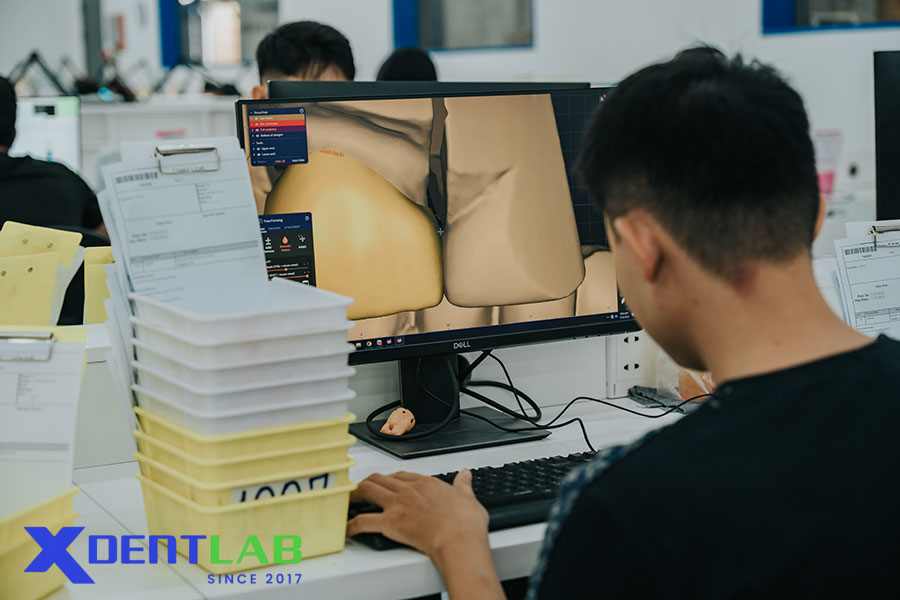
The arrival of CAD/CAM (Computer-Aided Design / Computer-Aided Manufacturing) technology marked a defining shift in the evolution of dental laboratory production. What began as an experimental concept in the late 20th century soon became a cornerstone of precision, efficiency, and scalability in modern prosthetics.
For dental labs, CAD/CAM did more than replace manual steps. It redefined the very structure of production. Digital design tools enabled technicians to model restorations with sub-millimeter accuracy, while automated milling systems delivered consistent results that traditional casting could never guarantee. The entire process became faster, more predictable, and less dependent on manual variability.
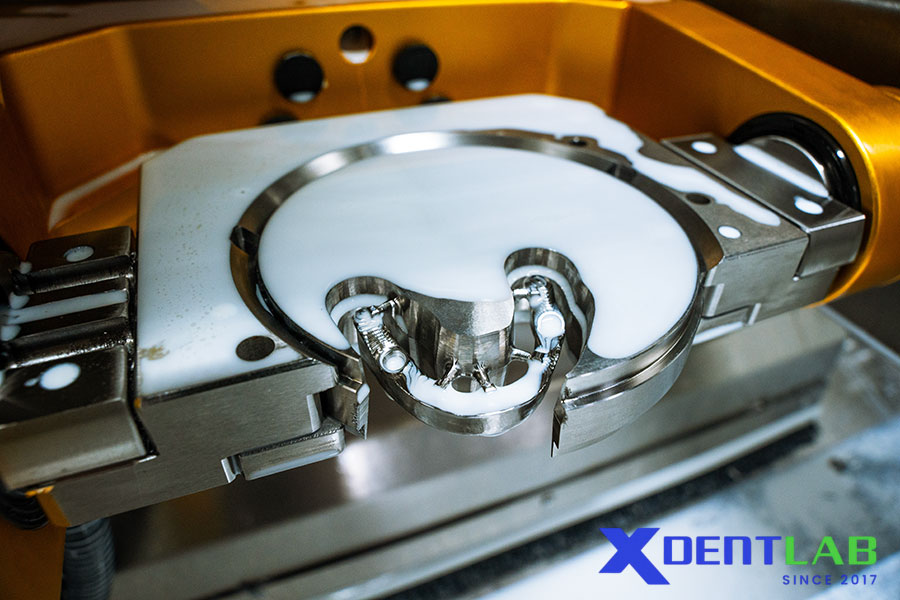
From a business perspective, CAD/CAM opened new pathways for cost optimization and capacity management. Once designs were digitized, they could be replicated or modified instantly, reducing remake rates and improving turnaround time. It also allowed labs to collaborate globally, outsourcing specific steps, such as design, milling, or finishing while maintaining control over quality and delivery.
Perhaps most importantly, digital workflows paved the way for material innovation. New materials like zirconia, titanium, and high-performance polymers could be milled directly with exceptional precision, enabling the development of hybrid systems that combine mechanical strength with natural esthetics.
The transition to CAD/CAM was not without challenges. Initial investments were high, and workflow integration required new skill sets. But for labs that adopted early, it became a powerful differentiator, transforming them from traditional craft shops into digitally driven manufacturing hubs.
This digital foundation set the stage for the next major leap in full-arch restoration design. The rise of hybrid materials, where digital precision meets esthetic flexibility.
Emergence of Hybrid Materials
As CAD/CAM technology became the new standard, it unlocked the potential for innovation not just in workflow but in material science itself. Dental labs began to explore how digital precision could combine with esthetic artistry and from that pursuit emerged the hybrid material system.
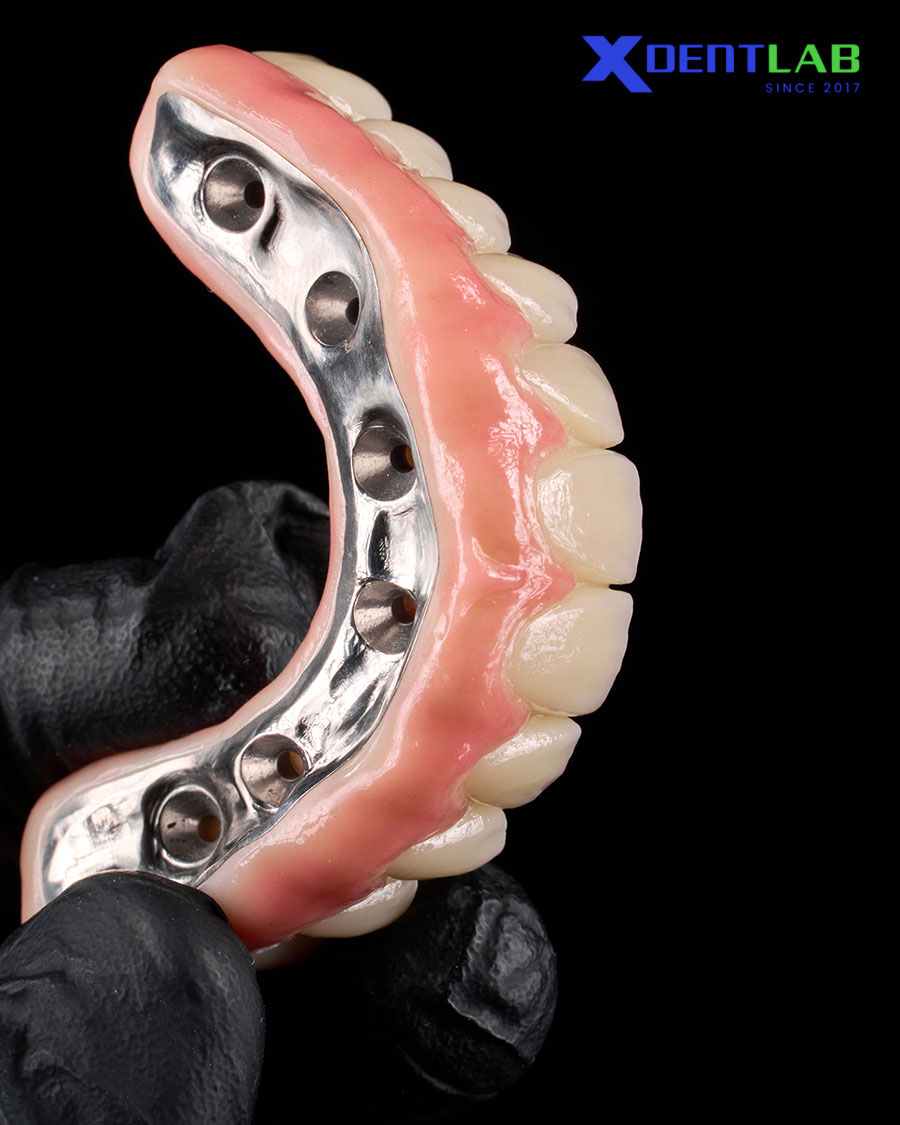
Unlike traditional Porcelain-Fused-to-Metal (PFM) restorations, hybrid systems blend the strength of a rigid framework, typically titanium or zirconia with esthetic layering materials. This fusion allowed labs to create restorations that were not only durable and biomechanically sound but also visually lifelike and highly customizable.
From a production standpoint, hybrids were a natural fit for CAD/CAM. The substructure could be digitally designed and milled to exact specifications, ensuring consistency and precision across every case. Once the framework was complete, technicians could focus their expertise on the esthetic layering, achieving artistry without sacrificing repeatability.
For lab owners, this development was transformative. Hybrid systems reduced remake rates, minimized human error, and increased overall throughput, all while maintaining premium-quality outcomes. With the ability to standardize design files and scale production efficiently, labs could finally balance craftsmanship with commercial growth.
Initially introduced as a premium solution for complex implant cases, hybrid frameworks have now matured into a scalable standard for full-arch restorations. Their digitally standardized workflow allows even highly intricate restorations to be reproduced consistently across multiple production environments, giving labs both creative freedom and operational control.
In many ways, the Full Arch Hybrid Bar represents the pinnacle of this evolution. By integrating zirconia for aesthetics and titanium for structure, it offers a synergy of beauty and strength that redefines what’s possible in implant-supported restorations. For labs, it’s not just a product; it’s a business model that aligns with the modern market’s demands for speed, precision, and reliability.
Hybrid vs. Monolithic Materials: A Practical Comparison for Labs
Overview of the Material Landscape
The material choices available for full-arch implant restorations have expanded dramatically over the past decade. For dental labs, this evolution has brought both opportunity and complexity. Each system, from traditional monolithic zirconia to the more advanced titanium-zirconia hybrid framework, represents a different balance between strength, esthetics, and manufacturability.
In today’s market, the distinction between monolithic and hybrid systems is no longer just a question of material composition, but one of business strategy. Labs must evaluate how each solution impacts not only clinical outcomes but also workflow efficiency, scalability, and long-term profitability.
Monolithic zirconia restorations continue to dominate for their simplicity and strength. They are fully milled from a single block, ensuring structural homogeneity and cost-effective production. However, they offer limited flexibility in esthetics and repair, and their rigidity can present long-term biomechanical challenges in full-arch cases.
In contrast, hybrid systems such as the Full Arch Hybrid Bar, which combines a titanium substructure with a zirconia suprastructure represent a new paradigm. This dual-material design brings together the endurance and precision of titanium with the lifelike translucency of zirconia. The result is a restoration that not only performs under functional stress but also meets the aesthetic standards of modern implant dentistry.
For lab owners, the choice between these systems extends beyond technical preference. It’s about positioning: whether to prioritize speed and cost-efficiency through monolithic production, or to invest in the long-term reliability and premium differentiation that hybrid systems deliver.
The following comparison summarizes the defining characteristics, strengths, and challenges of each approach.
Materials | Hybrid Materials | Monolithic Materials |
| Definition | A hybrid restoration that combines a titanium framework for structural stability with a zirconia suprastructure for esthetics and strength. It merges the precision of digital milling with the proven durability of both materials. | A restoration milled entirely from a single block of zirconia, offering uniform composition, high strength, and simplified manufacturing. |
| Composition | The base framework is milled from grade 5 titanium, ensuring precise fit, flexibility under load, and long-term mechanical integrity. The upper zirconia structure is bonded or screwed onto the framework, achieving lifelike translucency and superior rigidity. | A monolithic zirconia block milled directly from CAD/CAM data. No substructure is needed, minimizing interfaces and potential points of failure. |
| Advantages |
|
|
| Challenges |
|
|
Table 1. Materials comparison: Hybrid vs. monolithic
Choosing the Right System: Strategic Considerations for Labs
For modern dental labs, selecting between hybrid and monolithic systems is no longer a purely technical decision. It’s a strategic business choice that directly influences production efficiency, profit margins, and client satisfaction. The “right” system depends on how a lab defines its value: speed and cost-efficiency, or precision and long-term reliability.
Labs that prioritize volume and turnaround speed often lean toward monolithic zirconia, as its one-piece design streamlines manufacturing. The simplicity of CAD/CAM milling, reduced technician involvement, and lower material cost make it ideal for labs handling a high number of straightforward cases. However, this efficiency sometimes comes at the expense of esthetic realism and flexibility in adjustment or repair.
On the other hand, labs serving premium clinicians or complex full-arch cases increasingly turn to titanium-zirconia hybrid systems. The titanium substructure provides mechanical stability and implant-level precision, while the zirconia overlay enhances esthetics and wear resistance. This approach not only meets higher patient expectations but also reinforces a lab’s reputation for delivering quality-driven, clinically trusted restorations.
While hybrid workflows may appear more complex at first, their digital repeatability transforms that complexity into control. Once the design protocol is standardized, labs can reproduce cases efficiently, achieving consistent accuracy with far fewer remakes. The result is long-term scalability and higher ROI, turning technical sophistication into business efficiency.
From a business perspective, hybrid frameworks represent an investment in scalability and differentiation. Once the digital workflow is standardized, hybrid production can be efficiently replicated, whether in-house or through specialized outsourcing partners. This model empowers labs to expand their service capacity without overburdening technician resources, while still maintaining consistency across large case volumes.
In essence, choosing between hybrid and monolithic is about defining your market position. Labs that compete on price and speed will find monolithic restorations sufficient. Labs that compete on trust, esthetics, and long-term performance will find that hybrid systems, especially titanium-zirconia bars offer a distinct strategic edge in both quality and client loyalty.
The Strategic Value of Hybrid Systems for Modern Labs
In today’s competitive landscape, dental labs are no longer judged solely by craftsmanship. They are measured by efficiency, reliability, and scalability. As the demand for full-arch implant solutions continues to rise, hybrid systems have emerged not just as a material innovation, but as a strategic enabler for modern lab growth.
For U.S. labs navigating rising labor costs and technician shortages, the titanium–zirconia hybrid framework represents a powerful balance between performance and practicality. Its digitally driven workflow offers structural precision while reducing remakes, manual touchpoints, and long production cycles. Once a workflow is optimized, each case can be reproduced with consistent accuracy turning what was once an artisanal process into a scalable business model.
From a clinical standpoint, hybrid systems deliver a level of predictability and strength that aligns with the increasing complexity of full-arch restorations. Titanium’s resilience under load minimizes long-term failure risks, while zirconia’s lifelike esthetics satisfies both clinicians and patients seeking durable beauty. This blend of function and form strengthens a lab’s ability to serve high-value implant practices, where trust, esthetics, and fit are non-negotiable.
Although hybrid systems demand strict quality control and dual-material precision, their digital foundation makes them naturally suited for collaboration. Once a design file is finalized, it can be seamlessly shared with trusted production partners while maintaining full control over fit, finish, and consistency. This capability transforms global outsourcing from a logistical risk into a strategic advantage, enabling labs to extend their capacity while preserving quality standards.
Yet the true value of hybrid workflows goes beyond technical efficiency. They are redefining what collaboration means in the dental lab industry. Digitally integrated production allows U.S. labs to partner with specialized offshore facilities like XDENT LAB, leveraging global precision manufacturing while keeping creative and clinical oversight in-house. This model empowers labs to scale intelligently — meeting deadlines faster, managing costs more effectively, and strengthening relationships with clinicians through consistent, high-quality results.
In this new era, success is no longer defined by producing more cases but by producing smarter ones. Labs that embrace hybrid systems position themselves for sustainable growth, blending advanced materials, digital intelligence, and strategic partnerships to deliver the next generation of full-arch restorations.
The Future of Full-Arch Restorations: A Hybrid Model of Collaboration
As dentistry continues to evolve, the future of full-arch restorations won’t be defined by a single material or technology but by how effectively labs collaborate across borders, disciplines, and digital ecosystems. The rise of hybrid systems reflects more than just an engineering advancement; it symbolizes a hybrid mindset, where innovation, efficiency, and partnership coexist in harmony.
For many U.S. labs, the challenge ahead is not whether to go digital; that transition is already underway but how to sustain growth amid increasing case complexity, higher client expectations, and persistent workforce shortages. In this environment, hybrid frameworks are more than a product choice; they are the foundation for a new operational model.
This model integrates the precision of CAD/CAM design, the reliability of titanium-zirconia construction, and the scalability of global production partnerships. By decentralizing production while maintaining full digital oversight, labs can optimize cost, increase capacity, and ensure consistency, even across large case volumes.
The hybrid collaboration approach also redefines value in the dental supply chain. Instead of competing on price alone, labs can compete on performance delivering restorations that meet world-class standards for fit, esthetics, and turnaround time. Through trusted partnerships with advanced outsourcing facilities like XDENT LAB, labs can focus on design, client relationships, and quality assurance while relying on offshore teams for precision manufacturing and efficiency.
In this sense, the “hybrid” future is not just about materials; it’s about mindset. It’s about combining human expertise and digital precision, local insight and global production, clinical artistry and industrial scalability. The future belongs to the labs that embrace this duality; those that think hybrid not only in how they build restorations, but in how they build relationships.
Conclusion
The evolution of full-arch restorations tells a story of adaptation, from metal alloys to digital hybrids, from handcrafted artistry to globally integrated precision. Each innovation has pushed the dental lab industry toward one truth: excellence today is built on collaboration.
For labs across the U.S., hybrid systems are more than a new product category; they represent a strategic framework for the future. By blending the enduring strength of titanium, the refined esthetics of zirconia, and the precision of digital design, labs can meet rising clinical expectations while maintaining efficiency and scalability.
At XDENT LAB, we believe that the future of implant dentistry lies in this hybrid balance where advanced technology meets human craftsmanship, and where labs across continents work together to redefine quality. The next generation of full-arch restorations will not only be stronger and more beautiful, it will be smarter, more connected, and built on shared trust.
Because when innovation and partnership align, everyone, from lab to clinician to patient, smiles with confidence.
XDENT LAB is an expert in Lab-to-Lab Full Service from Vietnam, with the signature services of Removable & Implant, meeting U.S. market standards – approved by FDA & ISO. Founded in 2017, XDENT LAB has grown from local root to global reach, scaling with 2 factories and over 100 employees.. Our state-of-the-art technology, certified technicians, and commitment to compliance make us the trusted choice for dental practices looking to ensure quality and consistency in their products.
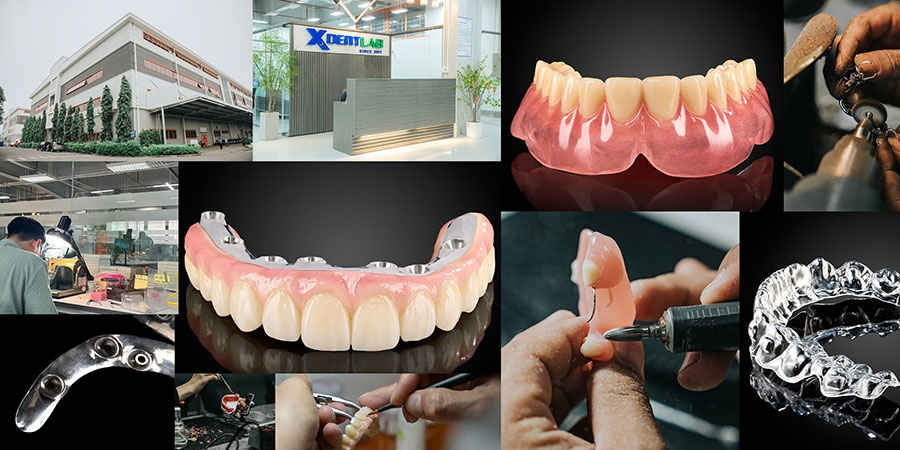
Our commitments are:
100% FDA-Approved Materials.
Large-Scale Manufacturing, high volume, remake rate < 1%.
2~3 days in lab (*digital file).
Your cost savings 30%.
Uninterrupted Manufacturing 365 days a year.
Contact us today to establish a strategy to reduce operating costs.
--------❃--------
Vietnam Dental Laboratory - XDENT LAB
🏢 Factory 1: 95/6 Tran Van Kieu Street, Binh Phu Ward, Ho Chi Minh City, Vietnam
🏢 Factory 2: Kizuna 3 Industrial Park, Can Giuoc Commune, Tay Ninh Province, Vietnam
☎ Hotline: 0919 796 718 📰 Get detailed pricing
Share this post:

